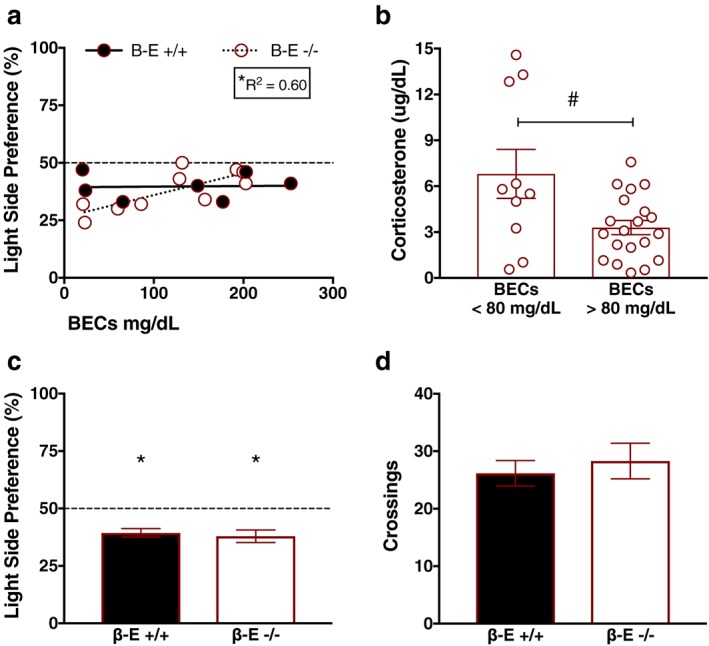Figure 3.

β‐Endorphin (β‐E) −/− female mice exhibit increased sensitivity to EtOH's anxiolytic effects. (a) Linear regressions depicting the relationship between blood ethanol concentrations (BECs) and preference for the light side of the light–dark box (LDB) in β‐E +/+ and −/− female mice immediately following the binge test. There was a significant positive relationship between degree of intoxication (BECs) and reduced anxiety‐like behavior in β‐E −/−, but not β‐E +/+, female mice, suggesting that β‐E −/− female mice exhibited greater EtOH‐mediated anxiolysis. The dashed line represents the value at which equal time is spent in both compartments of the LDB; the asterisk denotes a significant regression and corresponding goodness of fit value. (b) Because the only significant regressions between BECs and corticosterone (CORT) were observed in β‐E −/− female mice (see Results section), we further explored the effect of EtOH consumption on CORT. All β‐E −/− female mice were split into two groups based on intoxication threshold (BECs < 80 mg/dl and BECs > 80 mg/dl), and CORT levels were compared. β‐E −/− female mice that achieved intoxication tended to exhibit reduced CORT, relative to β‐E −/− female mice that did not, although this did not reach statistical significance (P = 0.060). However, an F‐test comparing variances indicated that β‐E −/− female mice with BECs >80 mg/dl exhibited significantly reduced variability in CORT levels, relative to β‐E −/− female mice with BECs <80 mg/dl (#P = 0.05). (c) Mean summary of data in (a) indicating that, overall, both β‐E +/+ and −/− exhibited anxiety‐like behavior in the LDB; however, there was no significant difference between genotypes. The asterisk denotes mean light side preference significantly lower than the null hypothesis of 50%. (d) There was also no significant genotype difference in locomotor activity, assessed by crossings, during LDB testing. Data are presented as means ± SEM
